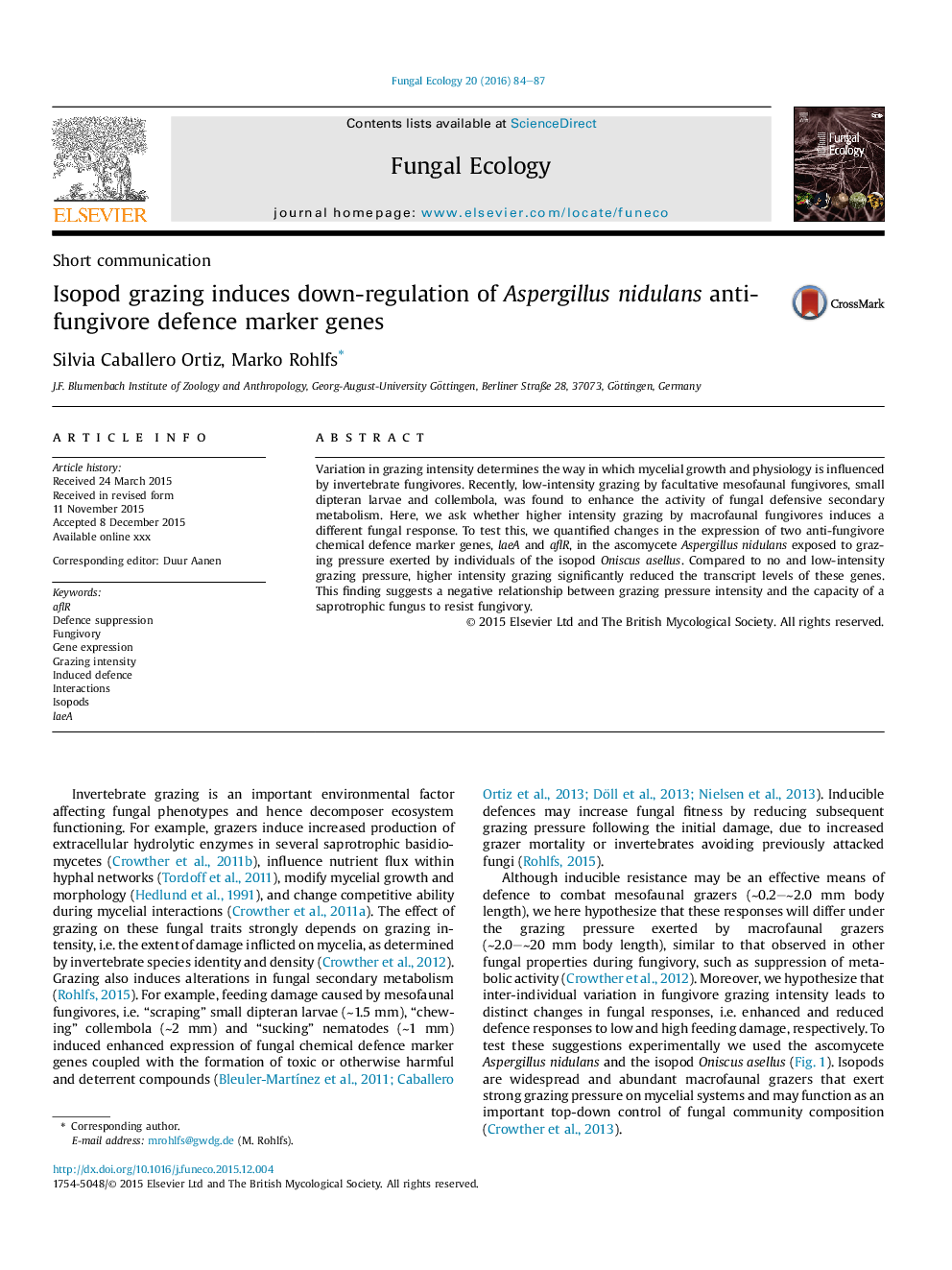| Article ID | Journal | Published Year | Pages | File Type |
|---|---|---|---|---|
| 8384461 | Fungal Ecology | 2016 | 4 Pages |
Abstract
Variation in grazing intensity determines the way in which mycelial growth and physiology is influenced by invertebrate fungivores. Recently, low-intensity grazing by facultative mesofaunal fungivores, small dipteran larvae and collembola, was found to enhance the activity of fungal defensive secondary metabolism. Here, we ask whether higher intensity grazing by macrofaunal fungivores induces a different fungal response. To test this, we quantified changes in the expression of two anti-fungivore chemical defence marker genes, laeA and aflR, in the ascomycete Aspergillus nidulans exposed to grazing pressure exerted by individuals of the isopod Oniscus asellus. Compared to no and low-intensity grazing pressure, higher intensity grazing significantly reduced the transcript levels of these genes. This finding suggests a negative relationship between grazing pressure intensity and the capacity of a saprotrophic fungus to resist fungivory.
Related Topics
Life Sciences
Agricultural and Biological Sciences
Ecology, Evolution, Behavior and Systematics
Authors
Silvia Caballero Ortiz, Marko Rohlfs,
